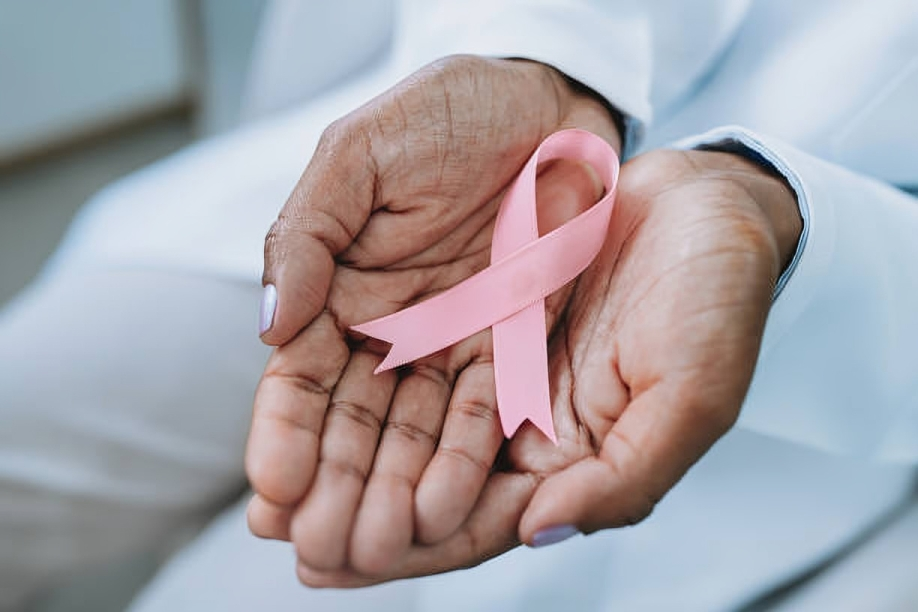
Breast cancer is one of the most talked-about diseases in the world, yet it remains widely misunderstood, especially in Nigeria. Conversations about it are often filled with half-truths, fear, and cultural taboos that stop people from getting the right information or help.
According to the World Health Organisation (WHO), breast cancer is the most common cancer globally, affecting both men and women. In 2022 alone, it accounted for 2.3 million new cancer cases and about 670,000 deaths worldwide.
What is even more eye-opening is that men make up roughly 1% of all breast cancer cases, a fact many in this part of the world still don’t know.
Despite growing awareness, several myths still cloud how people think and what they think about the disease. These misconceptions often lead to late detection, fear of diagnosis, or reliance on unsafe alternative treatments. This article aims to set the record straight and clarify what is true and what is not.
Here are seven popular myths about breast cancer that need to be debunked
1. Only women get breast cancer
This is perhaps the biggest misconception about breast cancer. While studies show that women are indeed more likely to develop breast cancer, the truth is that men can also be affected. The WHO and American Cancer Society report that about 1 in every 100 breast cancer cases occurs in men.
This happens because men have breast tissue too, and though smaller, it contains the same ducts and cells where cancer can grow.
Men often ignore early signs like nipple discharge, lumps, or swelling, assuming it is just fat or nothing serious.
Breast cancer does not discriminate by gender, and early awareness can make all the difference.
2. If you’re young, you can’t have breast cancer
While it is true that the risk increases with age, breast cancer can affect people of any age, including those in their 20s or 30s. According to the National Cancer Institute (NCI), roughly 5% of all breast cancer cases occur in women under 40.
In fact, younger people may also face more aggressive forms of the disease, which makes awareness and self-examination even more critical. The idea that “I’m too young for that” can cause delays that will eventually escalate into worse circumstances.
3. If it doesn’t hurt, it’s not cancer
Pain is not always a sign of cancer, but the absence of pain does not mean that all is well. In fact, many early-stage breast cancers are reported to be completely painless.
What you should look out for instead are signs such as a lump, thickened tissue, discharge, a new dimple on the breast, or changes in the nipple or skin texture.
Doctors emphasise that early detection has nothing to do with pain but everything to do with attentiveness to your body.
4. Wearing a bra to sleep or tight bras can cause breast cancer
This one has lived far too long in Nigerian conversations, but here is the truth: no scientific research links bras, whether underwired, tight, or worn overnight, to breast cancer.
The American Cancer Society has confirmed that the idea that bras block lymphatic flow or trap toxins is a myth. Breast cancer has nothing to do with underwear choices; rather, it is more about biological and lifestyle factors.
5. Breast cancer only happens if someone in your family has it
Yes, family history plays a role, but it is not the full story. Research says that about 85% of breast cancer cases occur in people with no family history of the disease.
Genes increase risk, but other factors like age, hormones, weight, alcohol consumption, and exposure to radiation can also contribute. So even if no one in your family has ever been diagnosed, it is still important to get checked and stay aware.
6. Herbal mixtures and spiritual cleanses can cure breast cancer
This myth is dangerous and deeply rooted in the desperation for an urgent and cheap cure. While some herbal remedies can help with symptoms like nausea or fatigue during treatment, no herbal mixture or spiritual ritual has been proven to cure cancer.
According to the WHO, the most effective response to breast cancer involves early diagnosis, access to quality treatment, and continuous care. Delaying medical treatment in favour of unverified remedies can allow the disease to progress to stages where it becomes even more difficult to treat.
7. A diagnosis means you’re going to die
This belief has caused unnecessary fear and hopelessness. But with modern medicine, technology, early detection, and improved treatments, breast cancer is not automatically a death sentence.
According to the WHO’s Global Breast Cancer Initiative, the five-year survival rate can exceed 90% when the disease is detected early. Many survivors go on to live full and healthy lives. The narrative needs to shift from fear to hope because timely action truly saves lives.
What You Should Do Instead
1. Practice self-examination
Everyone, regardless of gender, should make it a routine to check their breasts at least once a month. Look for lumps, swelling, or skin changes. Early detection begins at home.
